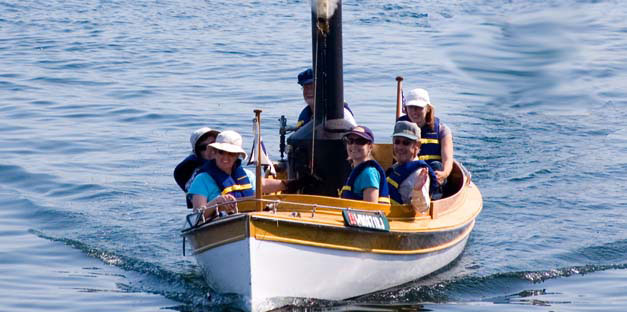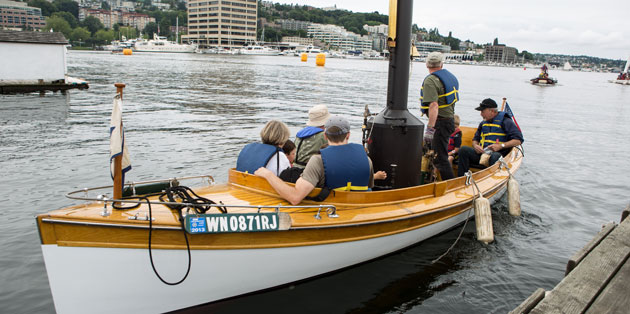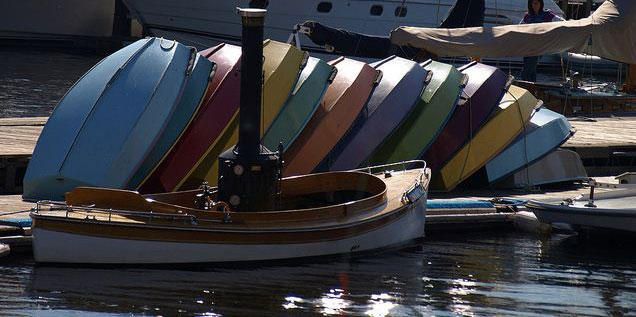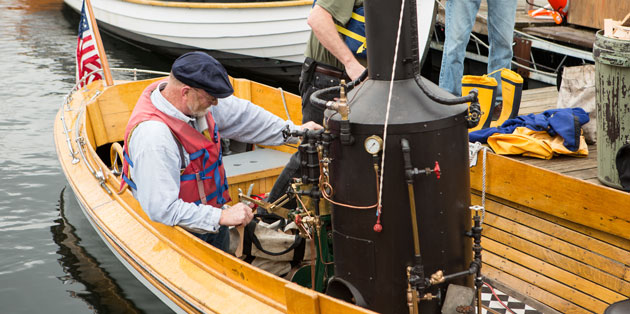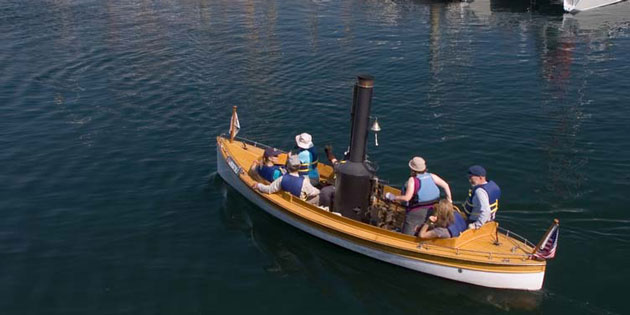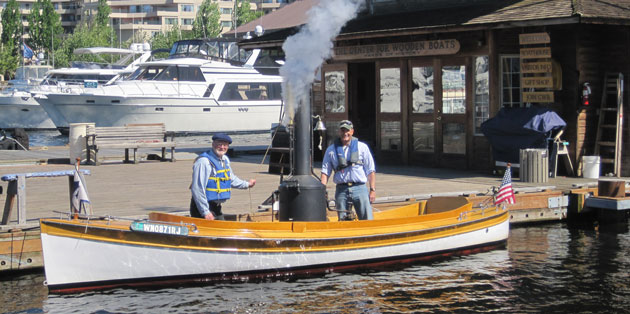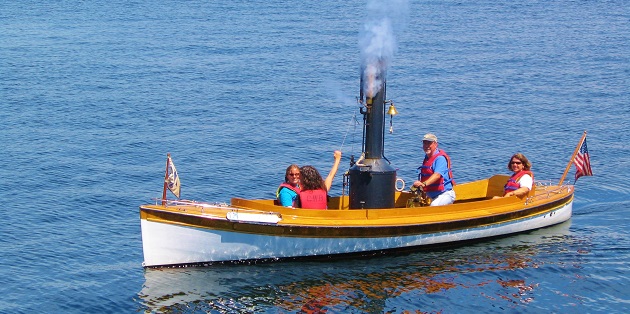Truscott Steam Launch – "Puffin"
Few vessels are as elegant as a well-proportioned steam launch. Small open steam launches like Puffin were only produced for a short time, from the late 1870s until the early 1900s. For most of that time they competed with naptha, electric, and gasoline-powered launches. Unlike these other powerplants, one needed a license to operate a steam engine, which limited the boats to a certain class of owners. By 1905, gasoline had emerged as the power of choice for small boats and steam launches like Puffin were no longer being produced. Due to its scalability, however, steam power remained a popular choice for larger vessels well into the 1930s.
Puffin actually started life as a gas-powered launch, built in 1906 by the Truscott Boat Manufacturing Company. Truscott was a large-scale builder of small boats, capitalizing on the manufacturing boom in the midwest surrounding the development of the gas engine. Located in St. Joseph, Michigan, Truscott was one of the first boat companies to switch to the cleaner and more efficient four-stroke- cycle gas engine design. Truscott launches were shipped all over the world, from China to Australia. The company obtained an exclusive contract to transport participants around the Columbia River during the Lewis and Clark Exposition in Portland in 1905. After a few ownership changes in the early teens, Truscott went on to build runabouts and other small pleasurecraft until shortly after WWII when the business closed.
Puffin has an odd stern shape, and Truscott referred to this model as the Compromise. The compro- mise was between the traditional overhanging stern (see Dora) and the torpedo stern or drag tail, a more recent shape in which the waterline extended aft of the rear edge of the deck and the bottom of the boat remained flat and shallow in the stern. Puffin’s stern is relatively flat on the bottom, but the stern post is vertical rather than raking forward, eliminating wasted space and making the boat sim- pler to build. It is an interesting moment in the transition from displacement to semi-displacement hull design theory in small boats.
The boat was restored and converted to steam power by Bob Evans in the 1980s. Evans used the boat on Lake Coer D’Alene and also brought it to early boat shows at CWB. In the 1990s he left the boat on the docks as a long-term loan and later donated it. Evans had chosen a period White steam engine for his re-power. That motor has been since been replaced, along with the boiler, to be more suitable for regular use. It is now powered by a single-cylinder motor made by Tiny Power, a small modern builder of traditional steam engines from Missouri.

